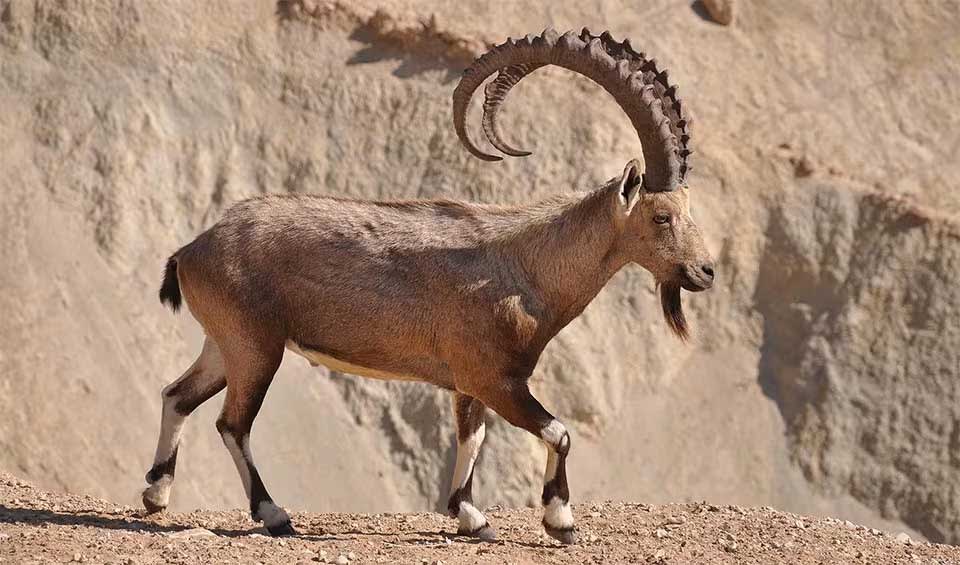The Nubian ibex, a species distinguished by its grace and agility, thrives in the rugged terrains of Northeast Africa and the Middle East. This remarkable creature, with its light tan coat and contrasting white underside, embodies the essence of survival in some of the planet’s most inhospitable environments. The males, adorned with dark brown stripes running down their backs, command attention, but the species’ distinctive long, thin horns genuinely set it apart. These horns, arching upwards before curving gracefully backward and downwards, are not just a striking visual hallmark but also a testament to the Nubian ibex’s place in the natural world. While males boast horns that can reach lengths of up to 1 meter (3.28 feet), providing a formidable tool for defense and dominance, females possess smaller horns, averaging around 20 centimeters (12 inches), reflecting the differences in their roles within the species.
As herbivores, Nubian ibexes maintain a diet consisting primarily of leaves and grasses, supplemented by shrubs, herbs, buds, and fruits. This dietary flexibility allows them to navigate the challenges of their arid habitats, where food sources can be scarce and sporadic. Their feeding patterns are intricately adapted to the harsh conditions they endure. Predominantly nocturnal feeders, they take advantage of the cooler night temperatures to forage, minimizing their exposure to the relentless heat of the day. This behavior not only aids in their quest for sustenance but also in their management of water loss, a critical concern in their dry environments.
The Nubian ibex’s daily rhythms are a study in adaptation. During the day, when the sun’s rays are most unforgiving, these animals seek refuge in shaded areas, resting and ruminating away from the heat. This activity pattern conserves energy and protects them from potential predators and the harsh climatic conditions that characterize their habitats.
Distribution
 Egypt
Egypt Official estimate
Official estimate
 Eritrea
Eritrea Ethiopia
Ethiopia Israel
Israel Official estimate
Official estimate
 Jordan
Jordan Official estimate
Official estimate
 Lebanon
Lebanon Official estimate
Official estimate
 Oman
Oman Official estimate
Official estimate
 Saudi Arabia
Saudi Arabia Sudan
Sudan Syria
Syria Yemen
YemenAnything we've missed?
Help us improve this page by suggesting edits. Glory never dies!
Suggest an editGet to know me
Terrestrial / Aquatic
Altricial / Precocial
Polygamous / Monogamous
Dimorphic (size) / Monomorphic
Active: Diurnal / Nocturnal
Social behavior: Solitary / Pack / Herd
Diet: Carnivore / Herbivore / Omnivore / Piscivorous / Insectivore
Migratory: Yes / No
Domesticated: Yes / No
Dangerous: Yes / No
Nubian ibex on banknotes






